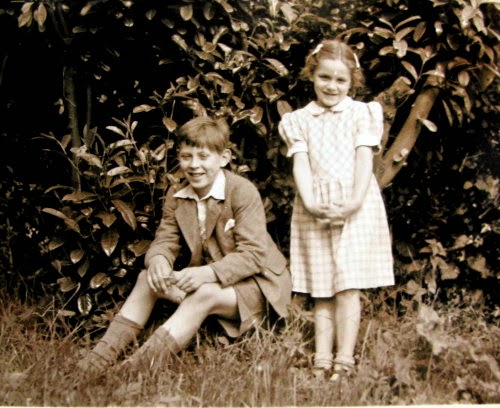Winslow is a market town and civil parish in the Aylesbury
Vale district of North Buckinghamshire. The town was first recorded in the
charter by which King Offa granted it to St Albans Abbey in 792/3 as
Wineshauue, which translated into modern English means Wine's Burial Mound. In
the Domesday Book of 1086, it was recorded as Weneslai.
My association with Winslow came about through visits to my
paternal grandmother Daisy Clara Flitney. I don’t know when granny moved to Winslow, but I feel sure she was there during the 1950s and 60s. Most of my memories of those visits stem from
around the time of my 10th birthday in 1958.
I have no recollection of my brother Tony or my sister Sue visiting
granny with us. There is an age gap of approximately ten years between the
three of us, so Tony might have been married by that stage and Sue was probably
working. That would explain why I recall long walks around Winslow with my dad without either
of my siblings. I loved being with dad and to have him all to myself was a real
treat. Mum and granny were always
pleased to have us “out from under their feet” while they chatted about the
latest “goings on” in the family. Don’t ask me what those “goings on” were but
trust me when I tell you they spent a lot of time discussing them.
Our walks always followed the same route. Exit via the back door, three turns around the bird bath (me not dad!) a quick dash through the garden to catch up and out through the gate at the end. Turn right on to the footpath, right again past the cricket pitch. Continue along the footpath before turning right once more onto the high street. Stop at the sweet shop for a sherbet fountain (sherbet with a liquorice dip) or a quarter of cough candy for me and a sugar mouse for dad. These were to be enjoyed as we took a leisurely stroll around the market square and the churchyard before eventually returning home.
In July of this year (2014), Terry and I visited Winslow. We
expected to find the footpath gone, and a housing estate where the cricket
pitch used to be, but we were pleasantly surprised. The photographs that follow
are a record of our visit.
This is such a well remembered view. As a child, I was always looking out for the pub
at the end of the road because that meant we had arrived! Dad would turn right in front of the pub and
park at the back of a row of houses, and that’s exactly what Terry and I did this time.
The footpath still runs along the back of the houses, but
I remember trees on both sides, and I don’t think there was a car park back
then.
The sports field with the cricket pitch in the background.
July 2014, The Market Square and The George Hotel, Winslow
and as it once looked
July 2014, St Laurence Parish Church, Winslow
St Laurence Parish Church as I remember it in the 1950s
Sadly, the visitors’ book in the church only goes back to
September, 1989. I was hoping to find an
older one as I feel sure we would have signed it.
Fancy T-hat
A colourful shop in the Market Square
A colourful shop in the Market Square
even brighter inside.
The High Street now
and as it once looked.
A walk along the high street and back to the house.
I couldn't remember the address but thanks to Cousin John
and Google maps we found it. The only new additions are the vintage signs otherwise
it looks exactly as it did even down to the colour of the paint!
The carriage entrance at the side of the house was a source of delight to
me as a child. The little door in the centre of the large door was endlessly
fascinating.
Granny Daisy and dad in the back garden at Winslow
Granny, me, and mum in the back garden at Winslow
Granny always stood on the pavement to wave us off, dabbing her eyes with a hankie as we drove away.
This time it was me shedding a tear.
If you would like to read more about the history of Winslow there is a very good site here.





































.jpg)

















